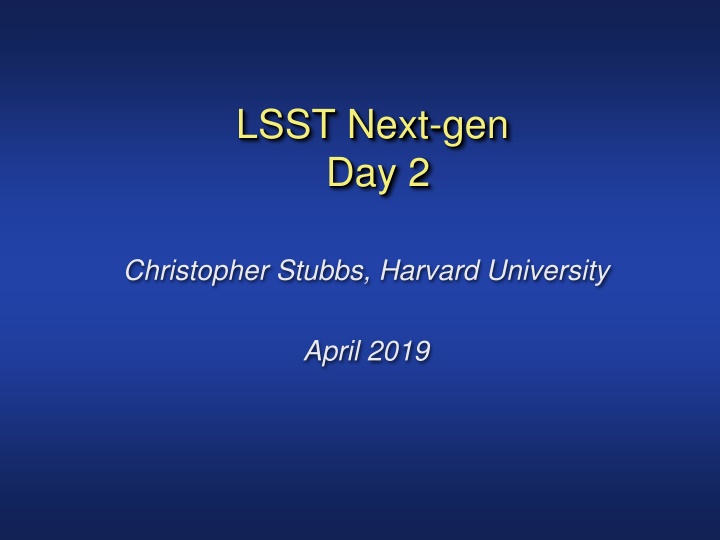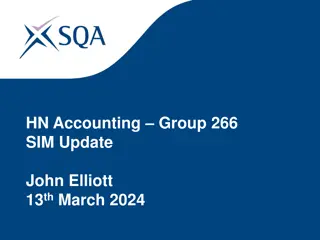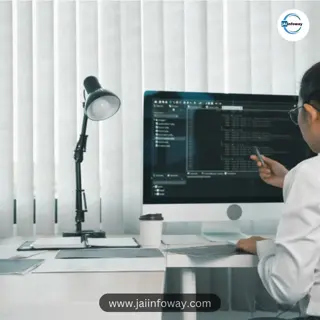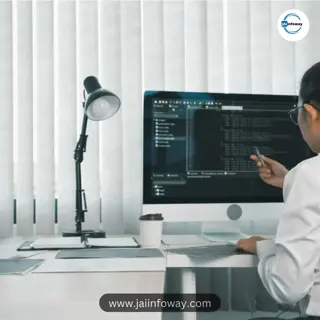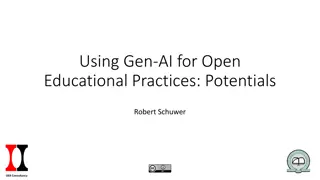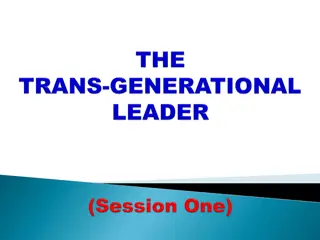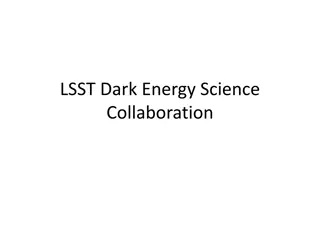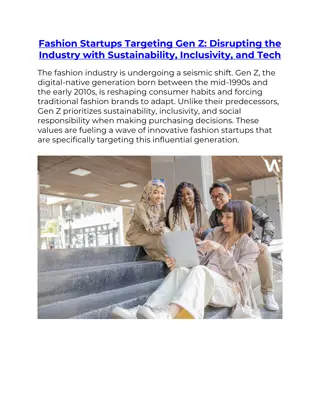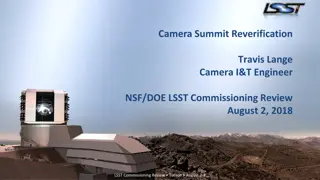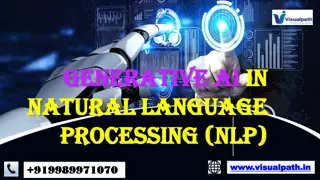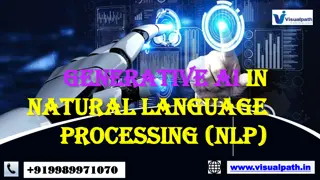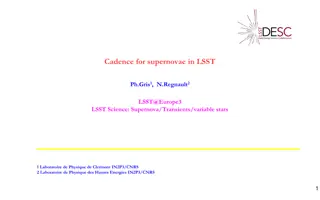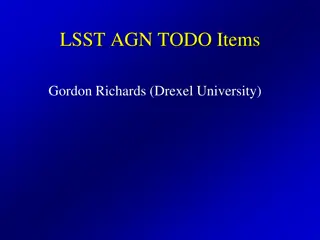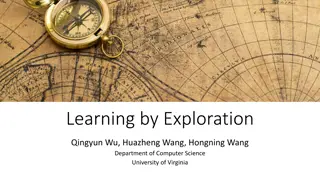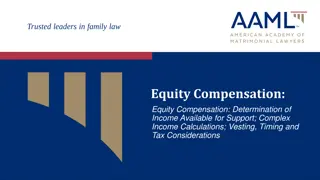LSST Next-gen Day 2 - Exploration of Alternative Technologies for LSST
Explore the potential enhancements for the LSST survey, including imaging with alternative filters, sensors for the focal plane, and fiber-fed spectroscopy. Discover the considerations for time availability, differential refraction issues, and the sweet spot for an LSST fiber-fed system. The discussion covers various technical aspects and trade-offs for maximizing the efficiency and effectiveness of the LSST project.
Download Presentation

Please find below an Image/Link to download the presentation.
The content on the website is provided AS IS for your information and personal use only. It may not be sold, licensed, or shared on other websites without obtaining consent from the author.If you encounter any issues during the download, it is possible that the publisher has removed the file from their server.
You are allowed to download the files provided on this website for personal or commercial use, subject to the condition that they are used lawfully. All files are the property of their respective owners.
The content on the website is provided AS IS for your information and personal use only. It may not be sold, licensed, or shared on other websites without obtaining consent from the author.
E N D
Presentation Transcript
LSST Next-gen Day 2 Christopher Stubbs, Harvard University April 2019
Three areas: 1) Regarding imaging with alternative filters: Explore marginal gain after LSST survey for shifted bands Explore notion of spatially-structured passbands 2) Regarding alternative sensors paving focal plane Cooling capacity is ~1.5 kW at -100C, and this is a limitation InGaAs with multiplexer readout seems very interesting, extending reach to 1.8 microns. WINTER is pathbreaker for this. Ge CCDs would do this as well, but can we get them cold enough? 3) Regarding fiber-fed spectroscopy This would sacrifice A-Omega imaging capability, where LSST will remain unique for foreseeable future. Is the marginal gain worth it? Only if spectroscopic figure of merit ~ (Nfiber*A*Resolution) is high enough.
Whats the sweet spot for LSST fiber-fed system? LSST field of view is 9.6 square degrees CatSim tool uses the number count model shown in the figure below: N=(1.8+1.2+0.7+0.5+0.3+0.2)E4~5E4 per square degree, total 20<i<23.5, or 14 per square arc min That s 450,000 targets per field, and 29,000 per field with 21.25<m<21.75
How much time is available? 18,000 square degrees = 1875 pointings Four years (trades operating costs against capital costs, guess 50M$/yr operating and 200M$ for instrument) Total avail integration time per field is then (4*0.5*0.5*365*24/1875)= 4.6 hr We d do this in a layered way, short exposure for m=21.5 brighter and longer for brighter ones. If we could make a 30,000 object system then apart from fiber collisions we d get i<21.5 in one pass. N-point correlation studies will require multiple fiber positioning per field, to avoid deadzone of adjacency on the sky. So it s probably better to imagine 10 hours per field, one hour of integration per configuration, and ten distinct fiber configurations. This cuts the area down to 10,000 square degrees, or extends survey duration to eight years to get full LSST area. Ten fiber configurations at 30,000 objects per pointing is ~complete to m< 21.5. LSST will give very high SNR for target selection on these objects.
Differential Refraction Concerns Atmosphere acts like a prism. Light of different wavelengths has angular separation at telescope pupil, makes a small rainbow on focal plane. Two airmasses is a zenith angle of 60 degrees and gets to declination of +30. An alt-sched-like strategy gets equal exposure coverage across entire LSST footprint. So let s take two airmasses as tentative limit.
Differential Refraction Concerns Atmosphere acts like a prism. Light of different wavelengths has angular separation at telescope pupil, makes a small rainbow on focal plane. Two airmasses is a zenith angle of 60 degrees and gets to declination of +30. An alt-sched-like strategy gets equal exposure coverage across entire LSST footprint. So let s take two airmasses as tentative limit. Centers of PSF s at 350 nm and 900 nm are separated by about 2 arcsec. That means we need to capture light from an area ~FWHM+2 arcsec But a single fiber with a diameter of 3-4 arcsec captures more sky than we d like. Also we d still suffer from some airmass-dependent systemtic spectrophotometric distortion that depends on surface brightness distribution. So what are the alternatives? 1. 2. 3. Make an atmospheric dispersion corrector, somehow, for each object Do low-Fourier-order-correction of spectrophotometry using ugrizy information Allocate more than one fiber to each object. What geometry? One-d line of fibers, use rotator to align to parallactic angle Two-d IFU-like arrangement
One conceptual design, to spark discussion Construct pupil-reimaging one dimensional array of 5 fibers per object, at 1 arcsec per fiber. Allocate two of them to local sky, and three to the object. Align to parallactic angle with rotator 2 arcsec lenslets? 100 micron pitch All identical. Need to reimage pupil to get good efficiency Total linear extent is 20 or 1mm if sky fibers are 5 arcsec from object Multimode fiber Pupil image cladding Mimics 2 x 6 arcsec slitlets
Multimode fiber Pupil image cladding Separation between outer edge of donut and inner wall of fiber determines assembly tolerance to microlens array Angular size of microlens array determines telescope pointing and fiber- module positioning requirements Diameter of cladding determines angular resolution on the sky.
Implications A 30,000 object capability seems roughly right. That means each one is responsible for 9.6 sq deg/30,000 = 1.15 sq arc min. At target density of 14 per square arcmin we need around 14 configurations to get all of them. Patrol area per object bundle is ~60 arcsec*10 microns/0.2 arcsec = 3mm Range of motion can be 1mm=1000 microns, assuming 9 pointings Precision requirements are modest, 0.5 arcsec is 25 microns Footprint of positioner can t exceed 3mm x 3mm, behind focal plane. If number of pixels per object is 7 cross-spectral x extent x Nfiber/obj ~ 7*12K*5 = 50Kpix/object, we need 13Gpix. Gives R~6000 at 2 pix/FWHM.
Specific risk-reduction tasks to allow cost assessment Investigate beam transport fiber properties for LSST-fed system. Prototype LSST-lenslet-fiber-instrument_feed optical designs Prototype small-IFU multifiber pupil reimaging unit underfill ratio on fiber? cheap replication! Pursue skipper-output Si CCDs Pursue skipper-output Ge CCDs (good for dark matter too!) Pursue dirt-cheap readout electronics Sketch out spectrograph conceptual design alternatives, with real Zemax analysis. Single-arm or dual? Has to be cheap! Look into small-motion fiber-nudgers 1 mm motion, 3x3mm footprint.
Specific risk-reduction tasks to allow cost assessment Solve the fiber spectrograph sky subtraction problem Calibration issues, both wavelength and spectrophotometric Identify and squash all sources of systematic error! Much of this can be bench-tested. Think about what filter-changer system would enable 30-band survey. Investigate fiber technologies- hexagonal? OH suppression? Cylindrical lens for refraction correction? Fiber-switching technologies? Promote high-fill-factor large format InGaAs arrays for NIR. Improve the acronym.
